History slightly bigger than ice cream
A friend from Hong Kong mentioned to me that it is very comfortable to go to Tunghai University for a walk. There are dairy cows raised in the pasture, and ice cream made of self-produced milk can be eaten. After my child heard about ice cream, he kept thinking about going to Tunghai University. We only recovered from the tiredness of Mount Dengari yesterday, and seeing the weather is so beautiful, we unanimously decided to go for a walk at Tunghai University, killing the rest of the holiday.
My knowledge of Tunghai University is limited to the ice cream mentioned by my friends and the photos of Lu Siyi Church that will appear in Taichung attractions. I take a walk for the purpose of eating ice cream. I will definitely not do any homework beforehand, even an ice cream shop. I can't find it, and I deserve it. It wasn't until a friend saw the photos of the buildings I shared while walking and left a message: "It feels so Japanese", I started to think: "Yeah, the buildings inside are so Japanese, is it a university established during the Japanese occupation? "I immediately asked Google, and the results showed that the school was founded in 1955. It made me want to learn about these buildings, so I spent the rest of the night learning about the history and architecture of Tunghai University. After reading it, the Tokai University in my mind immediately changed from a milky flavor to a heavy historical flavor. After finishing work this morning, I felt itchy, so I went to Tunghai University in the afternoon and walked again from beginning to end.
After entering the school gate, all the buildings that I had only savoured through words last night came alive, and my gaze changed from yesterday's casual wandering to focused exploration. It is said that the establishment of Tunghai University is actually related to the struggle between the Kuomintang and the Communist Party. After the Communist Party took power in 1949, the unfriendly attitude towards religious groups led to the gradual withdrawal of foreign churches from the mainland. In the early 1950s, in order to contain the expansion of communism, the United States supported Taiwan in all aspects. The Joint Board of Directors of China Christian Universities, which originally funded Chinese Christian universities, also decided to re-establish a higher education institution in Taiwan. 's school.
According to historical data, Tunghai University started planning in 1953 and invited famous architects Ieoh Ming Pei, Chen Qikuan and Zhang Zhaokang to design campus buildings and landscapes. The most representative building of Tunghai University is the Lu Siyi Church, which was designed by Chen Qikuan and I.M. Pei. The church is the first building in Taiwan to use the "thin shell" technique. The main body is composed of four upside-down book-like walls, towering but not sharp, graceful yet solemn, and surrounded by a large expanse of open grass. , showing the power of religion to soothe people and strengthen their beliefs.
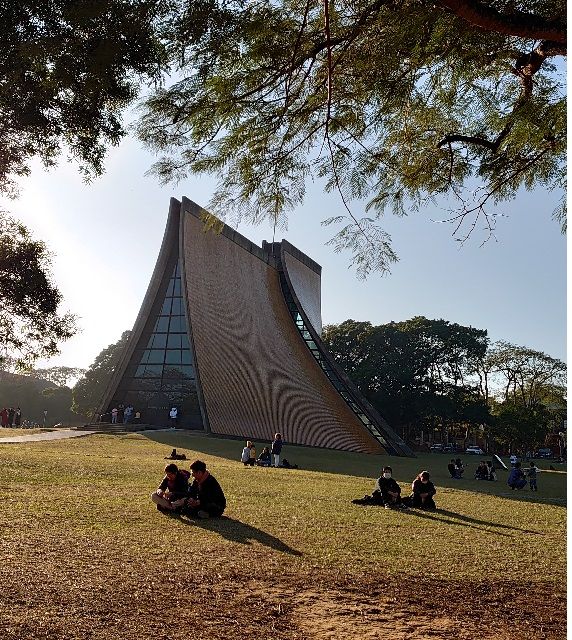
Crossing the grass on the left side of Lusiyi Church and crossing Jonong Road is Wenli Avenue guarded by sturdy banyan trees. Each department occupies a courtyard-style school building. The independent school buildings on both sides of the avenue are not neatly arranged on the roadside opposite each other. The school buildings on the same side are made of independent stone steps to create a height difference. The distance between each courtyard gate and the avenue is different. It is diagonally opposite again. This irregular house layout creates a space aesthetic like an ink painting, reflecting what Master Chen Qikuan said, "the beauty of the East China Sea is in the empty space". A friend who graduated from Dongda University told us that "the buildings of Dongda University are based on the architecture of the Tang Dynasty." I read a lot of literature on the buildings of Dongda University in the evening. Most of them mentioned that the early landscape planning of Dongda University was based on the spatial layout of Chinese gardens, and the buildings were a combination of courtyard structure and modernism, not the Japanese style I thought yesterday afternoon. Today, I take Wenli Avenue again, and carefully spy on each courtyard. It is not difficult to find the gatehouse structure of the traditional courtyard, the hall and the square corridor, which perfectly presents the simplicity of a Chinese courtyard.
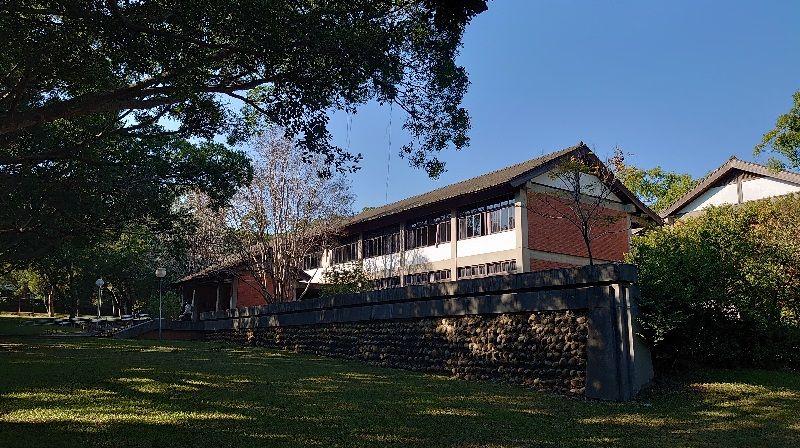
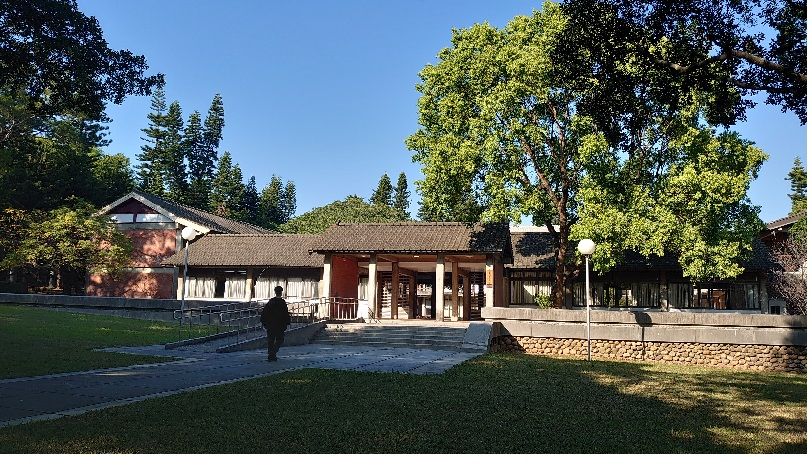
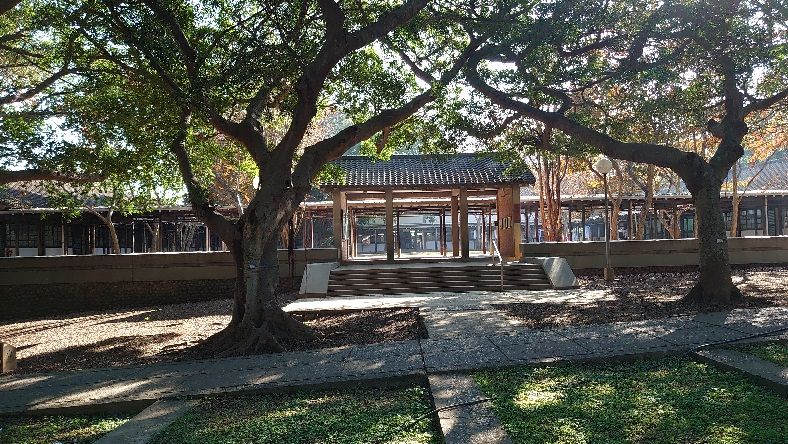
Another building that I find interesting is the Gymnasium of Dongda University. When I passed by yesterday, I thought it was just a small auditorium on the edge of a large lawn with pine trees. After reading the materials at night, I realized that this seemingly small building is actually not simple at all. The gymnasium was designed by Zhang Zhaokang. In order not to destroy the small and elegant feeling of other buildings on the campus and suppress the sublime sense of the church, Master Zhang deliberately extended the huge indoor space underground, so that the part exposed to the ground would not be too large. The grass in front of the gymnasium is deliberately slanted at an angle. When people stand on the road and look at the gymnasium across the grass, their sight is first blocked by pine trees. The building appears lighter. Because the gymnasium develops underground, the drainage, ventilation and lighting have all been carefully designed. Today, I took a special walk around the gymnasium, and when I got closer, I realized that this building is actually not petite at all. It contains badminton, basketball courts, volleyball courts and rhythm classrooms. Because of Master Zhang's ingenious design, this behemoth was visually reduced and stood quietly and quietly at the end of the grass. It is said that even the pine trees on the grass are full of thoughts. At the beginning, the master set up bamboo poles according to the number of trees to be planted. After the overall effect was satisfied, the planting position of each pine tree was determined.
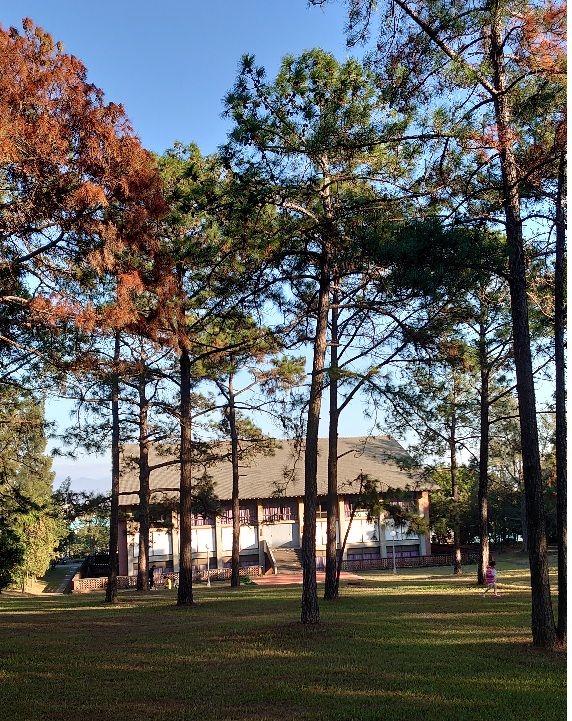

Before I left, I couldn't help but run to the dairy again. Sitting on a long wooden chair and savoring ice cream, I will visit Dongda again today. Is it to get closer to history or to take advantage of the opportunity to get closer to history to eat ice cream?
Friends outside Taiwan saw the photos of the buildings I shared and agreed that they were Japanese-style buildings. As for whether the design idea originated from the Tang Dynasty or not, I have not yet found any supporting materials, and even we have no way to judge, because we have not had the opportunity to see the complete Tang Dynasty buildings, and when the construction technology was passed from the Tang Dynasty to Japan, Japan The ancient buildings are well preserved, so we who love to travel to Japan, when we see the buildings of Dongda University, do not hesitate to think that they are Japanese-style buildings at first sight. It is not surprising at all. Fortunately, we are not writing. People of history, otherwise the history of Dongda will be tampered with by us. Last night, just after reading the history of Dongda University's establishment in Taiwan because of the church's expulsion, I received a letter from Hong Kong news about the suspension of operations. I couldn't help but think that after the media was purged, the next target to be attacked is probably church. People who do evil, always make history loop in an ugly manner.
Like my work? Don't forget to support and clap, let me know that you are with me on the road of creation. Keep this enthusiasm together!




